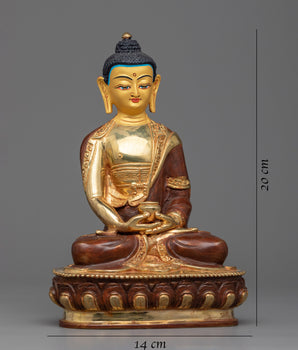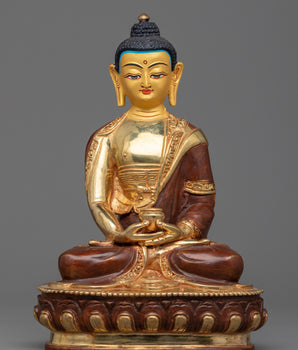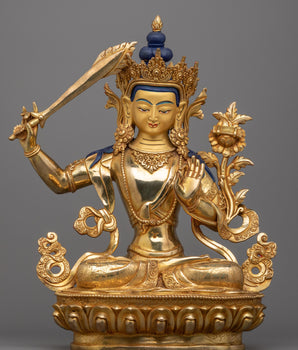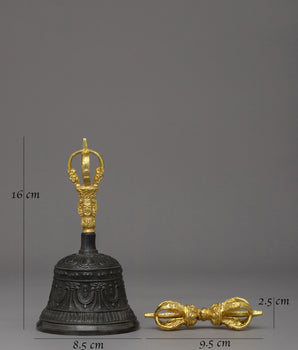







Copper Ritual Phurba | 50cm Tibetan Dagger for Spiritual Protection

100% AUTHENTIC

HANDMADE

FREE SHIPPING
Copper Ritual Phurba | For Tibetan Practices
--------------------------------------------
Size: 50cm (Height) x 19cm (Width)
Weight: 2.67kg
Materials: Copper Oxidized, Acrylic Color Body
--------------------------------------------
About The Ritual Item :
Discover the transformational potential of the Copper Ritual Phurba, a revered Tibetan dagger that has long been used to drive out negativity, pierce spiritual barriers, and guard holy places. This potent ceremonial weapon, which stands an astounding 50 cm tall and 19 cm wide, is crafted from oxidized copper and painted with acrylic hues that represent compassion and divine fury. This Phurba is ideal for serious practitioners, ceremonial leaders, and dedicated spiritual healers due to its substantial presence and weight of 2.67 kg.
From its triple-sided blade, which symbolizes body, speech, and intellect, to its handle, which is modeled like a deity and transmits higher vibrations, every element of this handcrafted Phurba dagger is imbued with symbolic meaning. The vibrant acrylic lends the pattern vitality and spiritual intensity, while the oxidized copper finish lends it an aged, hallowed appearance. The Phurba is a transformational, grounding, and energetic protection tool frequently used in Buddhist and shamanic ceremonies. It is ideal for large altars, temples, and ceremonial settings due to its impressive size and weight. For individuals who practice Tibetan Buddhism, energy healing, exorcism, or other advanced metaphysical practices, this copper Phurba ritual is essential. It is a potent instrument for establishing control over the ritual environment, removing negative energy, and establishing spiritual purpose.
Introduction To The Phurba :
The ceremonial dagger (Sanskrit: Kila; Tibetan: phurba) is essential for expelling evil and is considered particularly effective in neutralizing the forces obstructing Tantric Buddhist practice. It has ancient origins, first appearing in the Indian Rig Veda as the core blade of the vajra used by Indra to destroy the primordial cosmic snake Vritra. Kila, derived from Sanskrit, was most likely associated with Vedic sacrifices. Meditation on the Vajrakila Tantra, an early Indian scripture first promoted in Tibet in the eighth century by Padmasambhava, one of the founding teachers of Tibetan Buddhism, is used to invoke the three-headed Vajrakila Buddha.
How to Set Up Your Buddhist Shrine?
Find a clean, quiet, and uncluttered spot.
Please set up an altar table and cover it with an altar cloth that calls to you.
Place your sacred item (statue, thangka, or a picture of Buddha) at the center.


















